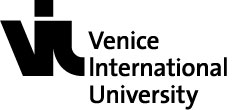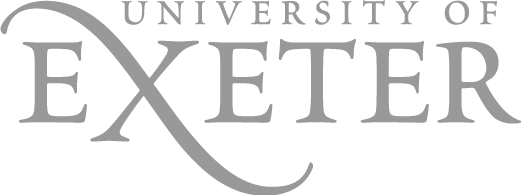F2007 Comparing East and West. Travel Writing in Medieval Culture
Professors
Schedule
Course description
This seminar investigates how medieval people discovered and learnt about the wider world. Textual knowledge would be supplemented by reports from travellers who travelled to some of the very well textualized locations, such as Rome or Jerusalem. This seminar considers travel writing in the broad sense of the term, including for instance an account to the far North of Scandinavia by two Anglo-Saxon travellers, Ohthere and Wulfstan. It also considers one of the jewels of Old English poetry, The Seafarer, a poem that blends literal and allegorical accounts of the solitary sea journey.
One could not discuss medieval travel writing in Venice without exploring The Travels of Marco Polo (1254-1324). His mercantile journeys to the East along the Silk Road led him as fare as China, where he served the royal court for 17 years. His travels inside China led him to discover areas and things unknown to Europeans.
The cult of saints and the veneration for the life of Christ led people to travel long distances, as pilgrims, to the Holy Land, Santiago, Rome and other local destinations where a saint was culted. The account of Felix Fabri's pilgrimage to Jerusalem is a good case in point, not to mention of course Margery Kempe who endlessly travelled all over Europe and the Holy Land to satisfy her need to venerate the saints and the holy family.
But one other traveller went (or did he?) even beyond the Holy Land to visit Egypt, India and China. Sir Mandeville wrote an account of his travels which became very popular, despite or because of its intriguing blending of facts, exaggeration and absurdity. The seminar aims will help us understand medieval views about travel and the discovery of the other. It will also help us discuss these aspects from a multi-cultural perspective, based on exchanges in the classroom.
Teaching method
The method of instruction will consist in a variety of pedagogical approaches. The teacher will provide lectures for not more than 45 minutes for some of the first sessions. It will be followed by small group discussions and workshop activities, which will be concluded by brief informal presentations by the students. During sessions, we will also structure discussion around students’ own experiences about travel and the relationship between travel, writing and books. As travelers from different cultures, but with Venice as our common destination on that particular journey, we will compare how our own cultural background colours and shades our sense of space and place, using Venice as our starting point for discussion. Venice was the major port for pilgrims on their way to Jerusalem, so we will also explore textual, visual and architectural material that can provide us with more information about medieval Venice.
Evaluation method
Students’ grade will be composed of three elements:
1. A mid-term commentary of an extract of text (30%)
2. Class participation (10%)
3. Final essay or submission of your personal Venice travel journal (real or virtual) that takes into consideration issues such as cultural difference, fact and fiction, subjectivity, gender, etc. (60%). Both should be around 3000 words in length.
Learning goals
Upon completing this course students should be able to
- read medieval travel writing in a critical way
- to learn to read and discuss theoretical texts linked to the course’s subject
- to be able to apply theoretical knowledge to primary material
- to think more globally about encountering other cultures and other values, and to develop ways of understanding the way in which construction of otherness are culturally dependent
Bibliography
Primary Texts
- BALE, ANTHONY (ED.), JOHN MANDEVILLE, (2012), The Book of Marvels and Travels, Oxford: Oxford University Press.
- BALE, ANTHONY (ED.) (2015), The Book of Margery Kempe: A New Translation, Oxford: OUP.
- LATHAM, RONALD (ED.), (1958), Marco Polo: The Travels, London: Penguin.
- MACKINTOSH-SMITH, TIM (ED.), (2003), The Travels of Ibn Battutah, London: Picador.
- TREHARNE, ELAINE (ED.), (2000) Old and Middle English: An Anthology, Oxford: Blackwell Publishers.
Secondary Literature
- BALE, ANTHONY AND SEBASTIAN SOBECKI (EDS.), (2019), Medieval English Travel (Oxford: Oxford University Press.
- BALE, ANTHONY, (2016), “ut legi”: Sir John Mandeville’s Audience and Three Late Medieval English Travelers to Italy and Jerusalem, Studies in the Age of Chaucer 38, 201-237.
- HOPENWASSER, NANDA, (1999) ‘A performance artist and her performance text: Margery Kempe on tour.’, in Performance and Transformation: New Approaches to Late Medieval Spirituality., ed. by Mary A. Suydam and Joanna E. Ziegler, Basingstoke: Macmillan, pp. 97-131.
- MAGENNIS, HUGH, (2007), “The solitary journey: aloneness and community in The Seafarer”, in Text, Image, Interpretation: Studies in Anglo-Saxon Literature and its Insular Context in Honour of Éamonn Ó Carragáin, ed. by Alastair Minnis and Jane Roberts, Studies in the Early Middle Ages, Turnhout: Brepols, pp. 303-318.
- NIEBRZYDOWSKI, SUE, (2013), “The middle-aged meanderings of Margery Kempe: medieval women and pilgrimage”, in Medieval Life Cycles: Continuity and Change, ed. by Isabelle Cochelin and Karen Smyth, International Medieval Research, 18, Turnhout: Brepols, pp. 265-285.
- ROSS, ELLEN M. (1993), ‘"She wept and cried right loud for sorrow and for pain". Suffering, the spiritual journey and women's experience in late medieval mysticism.’, in Maps of Flesh and Light: The Religious Experience of Medieval Women Mystics., ed. by Ulrike Wiethaus, Syracuse, N.Y.: Syracuse University Press, pp. 45-59, 163-166.
- SALIH, SARAH, (2003),“Idols and simulacra: paganity, hybridity and representation in Mandeville's Travels”, in The Monstrous Middle Ages, ed. by Bettina Bildhauer and Robert Mills, Cardiff: University of Wales Press, pp. 113-133.
- SCHEIN, SYLVIA, (1999) “Bridget of Sweden, Margery Kempe and women's Jerusalem pilgrimages in the Middle Ages”, Mediterranean Historical Review, 14, 1, 44-58.
- SOBECKI, SEBASTIAN I., (2002), “Mandeville's thought of the limit: the discourse of similarity and difference in The Travels of Sir John Mandeville”, Review of English Studies, n.s., 53, 211, pp. 329-343.
- SOBECKI, SEBASTIAN I., (2008), “The interpretation of The Seafarer -- a re-examination of the pilgrimage theory”, Neophilologus, 92, 1, pp. 127-139.
- UTTERBACK, KRISTINE T., (2000), “A call to active devotion: pilgrimages to Jerusalem in the late Middle Ages.”, in Lay Sanctity, Medieval and Modern: A Search for Models., ed. by Ann W. Astell, Notre Dame: University of Notre Dame Press, pp. 47-60.
- WATT, DIANE, (2006), “Faith in the landscape: overseas pilgrimages in The Book of Margery Kempe”, in A Place to Believe in: Locating Medieval Landscapes, ed. by Clare A. Lees and Gillian R. Overing, University Park, Pa.: Pennsylvania State University Press, pp. 170-187.




















